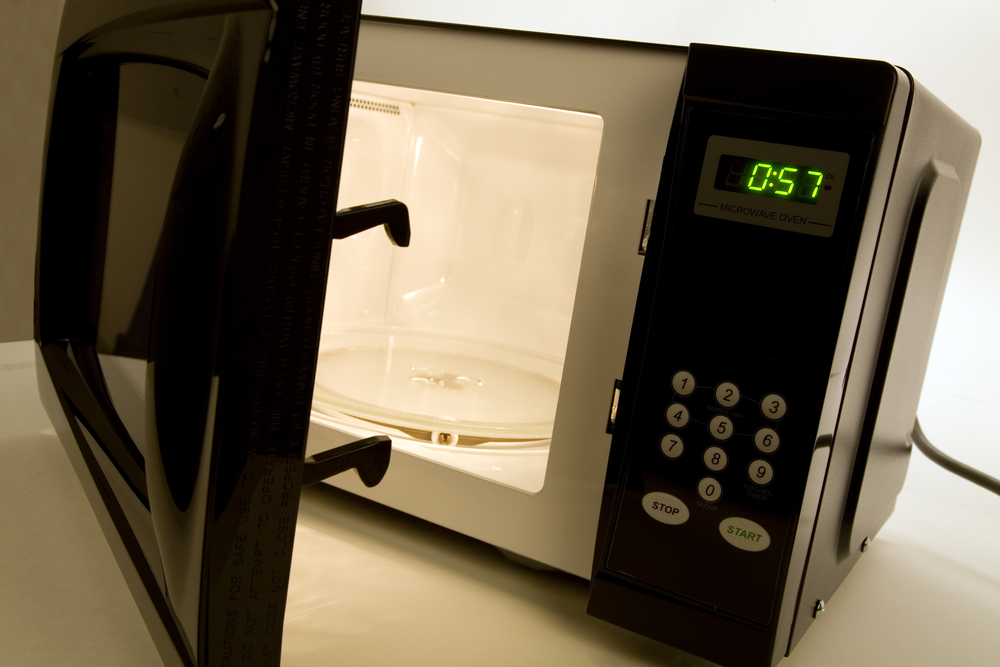You might be surprised to find out that you can troubleshoot and fix a microwave. With a few tools, a multimeter, and a schematic of the microwave’s electronics, owners can check microwave parts to determine what has broken down.
Doing your own microwave repair can save you money and time by eliminating the service repairman as well as markups on equipment parts associated with high-voltage home electronics.
Contents
A Touchpad That Does Not Work
One of the most common problems found in microwave repair is the touchpad that stops working. Today’s soft-touch buttons are made with two layers of mylar that form a membrane switch. Using a multimeter allows you to detect resistance as the buttons are pushed, letting you know if these microwave parts need to be replaced.
Another culprit here can be the control board, which you can visually inspect for burn marks or other damage.
Your Microwave Starts To Make Noises
Another common issue seen as you learn how to fix a microwave is a unit that begins to make loud noises. This can be caused by a variety of appliance parts including the cooling fan, drive coupler, drive motor, high voltage diode, magnetron, or rolling guide.
Some of these can be visually inspected, while others need to be metered. The high-voltage capacitor may need to be discharged before working on some parts listed here.
The Microwave Continues To Run
If your microwave continues to run after you open the door, the problem usually involves a faulty door switch. A multimeter can be used to determine if the switch provides continuity when the door switch is closed and if that continuity is interrupted when the switch is open.
If your microwave doesn’t shut down when you use the pause or stop buttons, it could be the relays on the control board.
Your Microwave Will Not Heat Up
If the switch on the door is not working, it may be signaling to not heat. Check it using a meter.
If the high-voltage diode is not working, it will prevent the magnetron from heating. Discharge the capacitor before inspecting the diode.
Finally, you may have a broken magnetron, which produces the heat itself. Place your meter’s probes across the magnetron terminals. There should be two or three ohms of resistance.
The Microwave Will Not Activate
The interlocking switch for the door could be the issue, so check it as described above. If the switch is not the issue, it could be the door latch. A visual inspection can detect cracks, discolorization, or other signs of wear and damage that will indicate that these microwave parts need replacement.
Fuses can also be a problem here. They protect against electrical spikes and overheating. If they are burned out they need to be replaced.
The Tray Will Not Rotate
Start by checking the roller guide under the tray, making sure it is not damaged and is working. Next, check the coupler beneath the roller guide to make sure it is not damaged.
If those are not the problem, it is likely the drive motor. Removing it and checking for continuity on a multimeter will verify if it is working.
The Microwave Door Will Not Shut
The culprit preventing the door from closing is often the door latch system. Visually inspecting these parts will help detect damage that prevents them from working.
If your microwave door swings down, it could also be faulty torsion springs. Visually inspect them for corrosion or other damage.
Microwave Door Stuck Closed
If you can’t open the door, the door latch or the button that activates it is probably broken. Opening the housing provides access to the latch, which you need to inspect for damage or for components that will not move.
Your Microwave’s Fan Is Not Working
Grease filters become clogged over time and should be inspected for build-up or damage. Cleaning or replacement should fix it.
Over-the-range units often have dampers that prevent air from entering the system. These flaps can be visually inspected to make sure they are moving properly.
These styles of microwaves also use charcoal filters that can become clogged and need to be inspected and possibly replaced.
Finally, the fan motor itself could be the issue. Metering for continuity here will let you know if it is working properly.
The Microwave Sparks
The high-voltage diode could be stuck open or not working. That can lead to heating issues that cause sparks during operation. Check the diode with a meter to make sure it is functioning.
Other parts that can cause sparking is the stirrer. This helps to evenly distribute heat. This belt is often on the top of the microwave and can be inspected for damage.
If you’re still having issues, you may have to consider buying a new microwave. Luckily, we’ve tested a handful of the best microwaves to help our readers decide what’s best for them.







